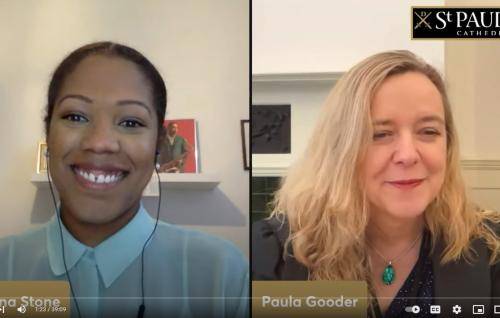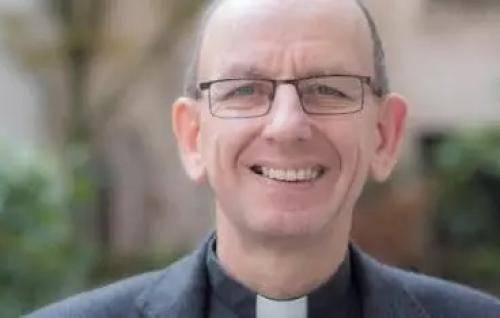The Light of the World
The Light of the World
Malcolm Guite reflects on darkness and light through poetry for the month of November.
1. An Affirming Flame
With the nights drawing in and the days so often cloudy and overcast, we have come once more to the dark time of year and the season draws different responses from all of us.
For children, and the child within us, there will be the excitement and fear of going out and coming home in the dark, the thrill of night-skies lit up by fireworks. For some of us as adults there will be a sense of new warmth and community as we come closer together, do more indoors, gather in pubs round roaring fires or spend longer evenings at home with one another. For others there will be inward, as well as outward gloom a sense that the dark evenings, the bleak days, the sun lost or formless behind hostile clouds, is more than just outer weather but an expression, perhaps a cause, of emotional and spiritual darkness too.
And given the news that assails us every day we may feel, as WH Auden did in 1939:
Waves of anger and fear
Circulate over the bright
And darkened lands of the earth…
Defenceless under the night
Our world in stupor lies…
Yet that poem, September 1st 1939, for all its bleakness, ends with the line:
‘Show an affirming flame.’
What resources for encountering darkness might we find in the tradition and mystery of our faith, so that we too, in our generation, might ‘show an affirming flame’?
Simply to light a candle, at home or in church, is by its very nature and in all its accumulated meaning, ‘an affirming flame’, and when the candle is accompanied by a heartfelt prayer then many things may change including ourselves, as we make an act of resistance, saying to the darkness: ‘I beg to differ’.
2. The Light of the World
In the previous reflection I asked what resources for encountering darkness might we find in the tradition and mystery of our faith, and of course our resources go well beyond the lovely liturgical gesture of lighting a candle I explored last time.
Light shining in the darkness is one of the great themes of Scripture, and the good news at the heart of it all is that we don’t have to be that light all by ourselves, but that Christ himself, who is ‘the light that shines in the darkness, and the darkness has not overcome’ (John 1:5) shines in us. Indeed he declares himself to be The Light of the World, and that whoever follows him ‘will never walk in darkness, but will have the light of life’ (John 8:12).
I don’t think this is only some invisible ‘spiritual’ light, I think every gleam of light we ever see speaks to us of Christ. I tried to put that in a poem once.
I AM the Light of the World
I see your world in light that shines behind me,
Lit by a sun whose rays I cannot see,
The smallest gleam of light still seems to find me
Or find the child who's hiding deep inside me.
I see your light reflected in the water,
Or kindled suddenly in someone's eyes,
It shimmers through translucent leaves in summer,
Or spills from silver veins in leaden skies,
It gathers in the candles at our vespers
It concentrates in tiny drops of dew,
At times it sings for joy, at times it whispers,
But all the time it calls me back to you.
I follow you upstream through this dark night
My saviour, source, and spring, my life and light.
From Malcolm Guite’s collection Parable and Paradox.
3. Star-Gazing
One advantage of these longer and darker nights is that we have more time to gaze at the stars. When the psalmist wrote that ‘the heaven’s declare the glory of the Lord’, he would of course have seen them in their true glory, undimmed by the garish loom of city and streetlights.
But sometimes, if we are deep in the countryside we can have that experience, and then we see the Milky Way not as a faint blur, but as a beautiful luminous path across the Heavens. That’s how the poet George Herbert saw it, looking up, in that pre-industrial darkness, from his Parish in Bemerton, and perhaps that’s what led him in to call prayer itself ‘The Milky Way’.
We may not see as much with the naked eye as our ancestors did, but we have instead the almost miraculous images of the stars taken from space, above the blur of our atmosphere in absolute clarity. I tried in a sonnet to tease out what Herbert might have meant by calling prayer ‘the Milky Way’, but also included in my poem the wonderful images from the Hubble Space Telescope!
The Milky Way
It’s always there, but when our lights are low,
Or altogether out, we see it shine;
Only when things are darkest here below
Do we discern its soft pearlescent sheen,
Gracefully traced across the midnight sky,
In whose light Herbert saw the path of prayer.
Though pale and milky to the naked eye,
The view from Hubble, far above the air,
Shows us a star-field rich with many colours
‘Patines of bright gold’ and blue and red,
Abundance of a hundred billion stars
Whose centre lies in Sagittarius,
Darting their glory, like the myriad
Of saints and angels who all pray for us.
From Malcolm Guite’s collection After Prayer.
4. Looking Towards Advent
‘The people that walked in darkness have seen a marvellous light, upon them that dwell in the shadow of death, the light hath shined’.
This luminous verse in Isaiah 9:2 is traditionally read at Advent as we look forward to the coming light of Christ. For those of us who live in the northern hemisphere, this passage is especially apt, and indeed the celebration of Christmas in midwinter has an extra layer of meaning, a kind of parable from nature to underline and emphasise the prophecy of Isaiah.
Isaiah is speaking of the darkness of exile, the darkness of our fall, and at the root of it all the thick clotted darkness of sin. This is the darkness that Christ comes to dispel, and John, remembering this verse in Isaiah, tells us that the light shines in darkness and the darkness has never overcome it, a verse we have already remembered in these reflections, and which we will hear when we come at last to the midnight service on Christmas Eve.
To hear these readings in the dark time of the year, when the nights draw in, when darkness itself helps us see the light shining more brightly, is to know the final triumph of the inextinguishable light of Christ not just in our heads, but in our hearts, not just by reason, but by a kindled imagination.
When a child comes up in church to light an Advent candle, then the gospel is known not only with the mind but with the body as well. And that is especially important as we celebrate the incarnation, the astonishing truth that God became one of us, that He who is the light of the world was once as young and vulnerable as the child who lights the candle and meets us in our vulnerability wherever we are.








